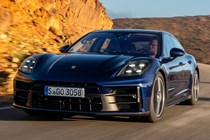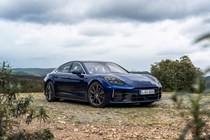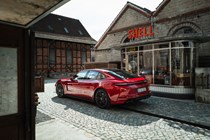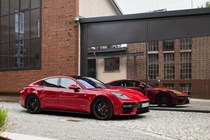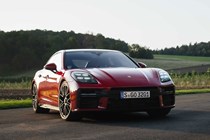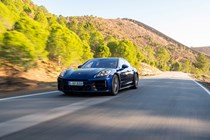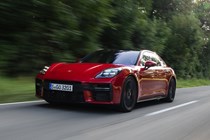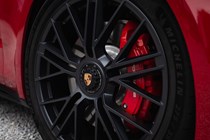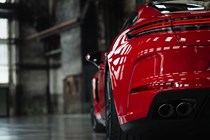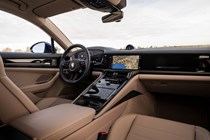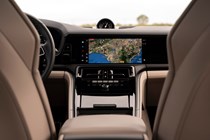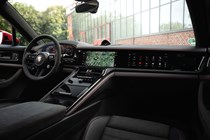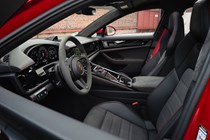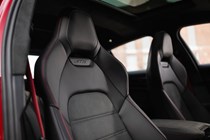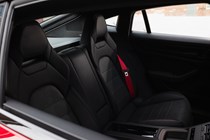
Porsche Panamera engines, drive and performance
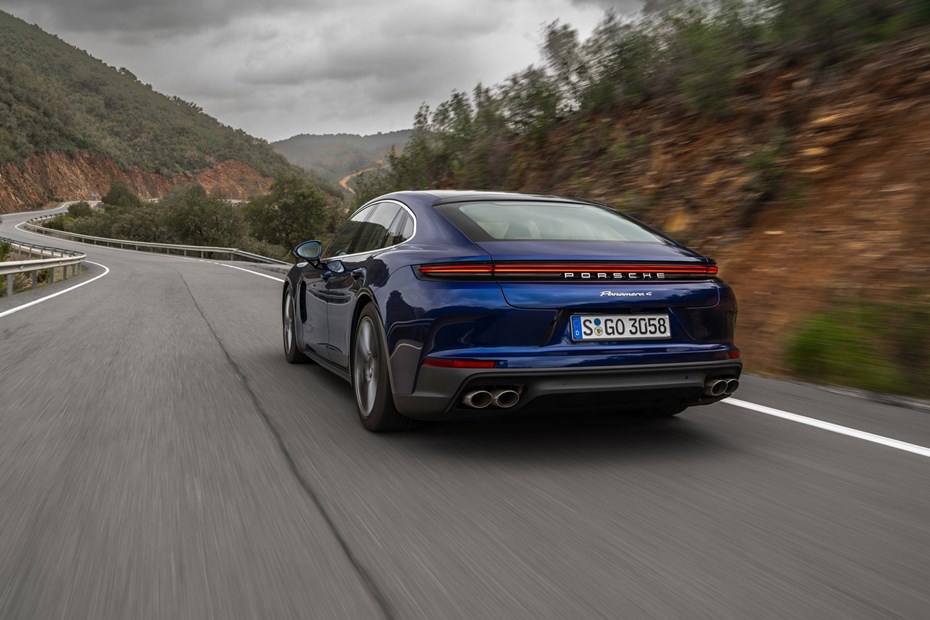
- Choice of six powertrains
- V6 and V8 petrols available…
- … plus, a range of PHEV options
Petrol engines
The entire Porsche Panamera line-up is now built around a range of V6 and V8 petrol engines. If you don’t want your car to have any electrical assistance, you have a choice of three models – the standard Panamera, the Panamera 4 and the Panamera GTS.
The first two models use the same turbocharged 2.9-litre V6 petrol engine, which produces 353hp and 500Nm of torque (pulling power). Both cars also feature an eight-speed automatic gearbox, but the former car has rear-wheel drive while the latter gains all-wheel drive.
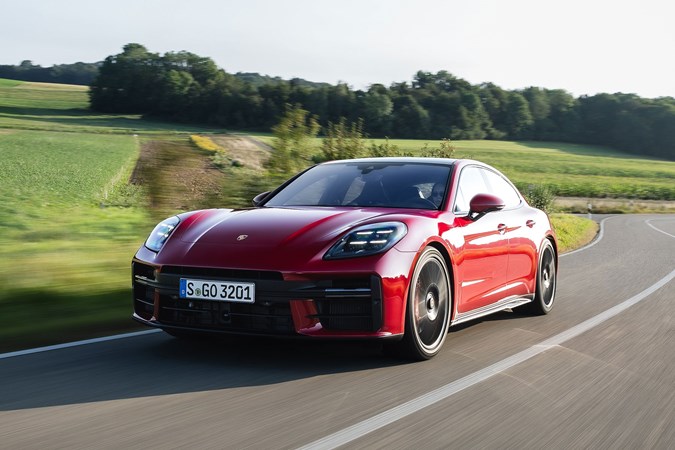
The standard Panamera can accelerate from 0–62mph in 5.3 seconds before hitting a top speed of 169mph. The extra traction afforded by the Panamera 4’s all-wheel drive system cuts its 0–62mph time down to five seconds flat, but it loses a single mph off its top speed.
The GTS is far more exciting. It has a twin-turbocharged 4.0-litre V8 engine that throws 500hp and 660Nm of torque at all four wheels. The result? A 0–62mph time of 3.8 seconds and a top speed of 188mph.
Plug-in hybrid powertrains
Porsche reckons its PHEV powertrains will dominate the Panamera’s sales. So much, in fact, that it’s giving its customers four distinct options called the 4 E-Hybrid, 4S E-Hybrid, Turbo E-Hybrid and Turbo S E-Hybrid.
The first two use the same 2.9-litre V6 engine as the standard car, but they’re supported by a beefy electric motor and a 25.9kWh battery pack. They have combined outputs of 470hp and 544hp respectively – and they can both cover more than 50 miles on electric power alone according to WLTP testing.
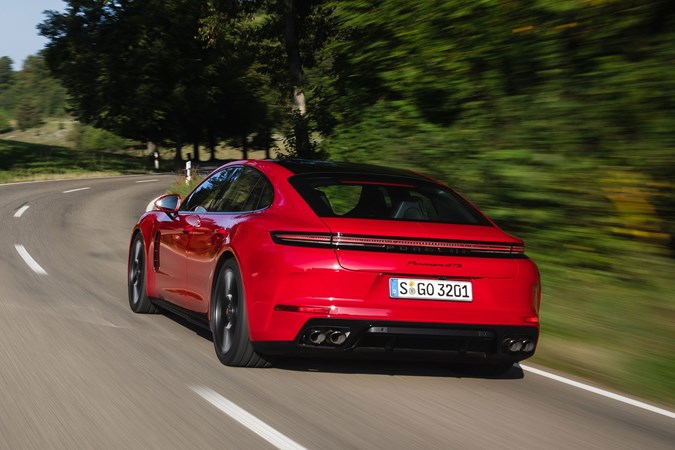
The Turbo and Turbo S E-Hybrids are different animals. They team the same hybrid technology with the GTS’s bombastic 4.0-litre V8 to bring supercar-slaying performance. The former has a combined output of 680hp, which hacks the Panamera’s 0–62mph down to just 3.2 seconds and increases its top speed to 196mph.
If you really want to scare yourself, opt for the Turbo S. It has a simply enormous output of 782hp and 1,000Nm of torque. Put your foot down from a cruise and you’re instantly in the neighbouring parish. Or, from a standstill, you’ll be able to thrash from 0–62mph in just 2.9 seconds. To put that into perspective, that’s the same as a McLaren 720S.
What’s it like to drive?
- Stunning handling
- Superb steering
- Excellent ride quality
Fabulous. Every version of the Panamera strikes a balance between comfort and sportiness that none of its rivals can match. Even with one of the milder V6 engines under the bonnet, you can tell that this is a car designed for the driver.
The steering has a wonderfully linear feel to it, being quick off centre and firming up exceptionally well as you wind on the lock. We’re also awestruck by how fast Porsche has managed to set the steering without making the Panamera feel nervous or twitchy. It’s completely natural.
Porsche has engineered the Panamera’s suspension well, too. Its body is remarkably well controlled, even during quick changes of direction. That’s impressive when you learn that it shares the same rough footprint as a Range Rover and it can weigh more than 2.3 tonnes in PHEV guise.
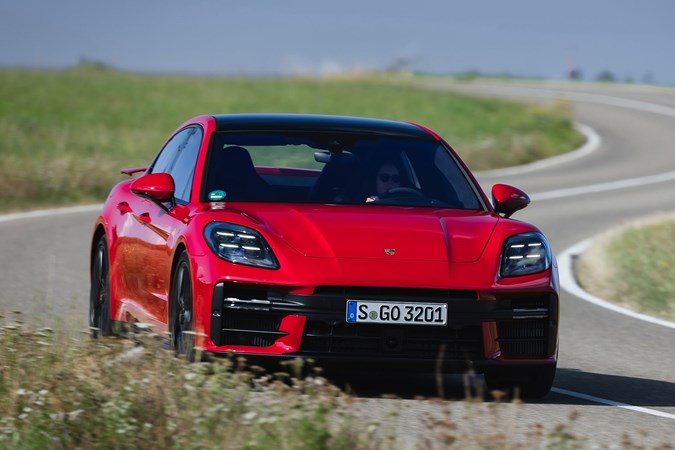
You can only specify the plug-in hybrid models with Porsche’s Active Ride system. Having tried it on the roads around Stuttgart, we’re not sure it’s worth the money. It doesn’t make a huge difference to the ride quality when you’re cruising and, when you’re driving quickly, it makes the car feel quite unnatural. This sensation is aggravated by teaming it with Porsche’s rear-wheel steering system.
If you want the best-driving Panamera, buy the GTS. It doesn’t have any of the clever chassis tech you get on the plug-in hybrid models, but that means it’s lighter and therefore more eager to attack a twisty road. It also means your inputs are passing through fewer electronic nannies before arriving at their components.
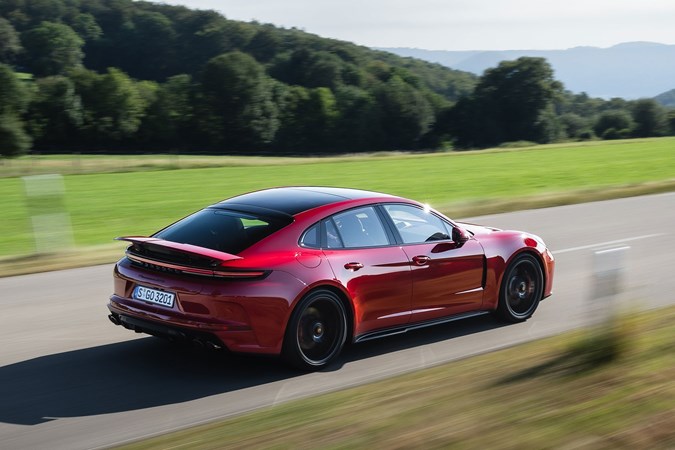
You don’t make any compromises in comfort, either. Even with the adjustable dampers in their most aggressive Sport Plus setting, the ride was more than acceptable enough to spend all day at the helm, blasting down the autobahn. It’s brilliant.
If we had to be critical, we did find the Panamera to have quite a lot of road noise on the motorway, especially on rougher stretches. However, our test car’s larger 21-inch alloy wheels and rubber band tyres won’t have helped matters. We’re looking forward to seeing how the car copes with UK roads.


